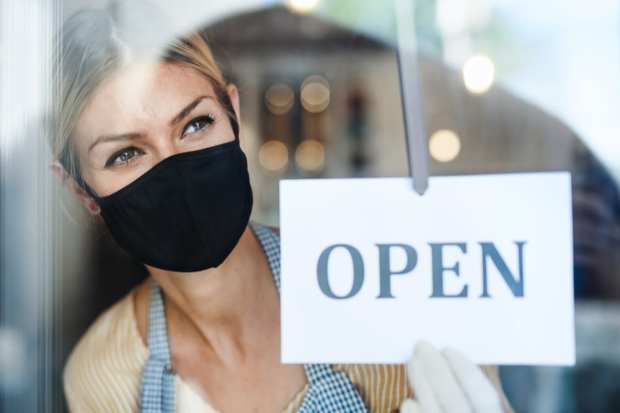NRF Cautions On Treasure Hunt Shopping

The reopening of retail is bound to portend changes for businesses as well as consumers. The National Retail Federation (NRF) and other groups have released guidelines for store operation and design today (May 22) as members begin to come back from the economic devastation of the pandemic. The NRF, for example, brought in several independent design experts for the project to deliver some innovative ideas and some of them are bound to be controversial.
The report covers potential changes in store design, recommendations for clean stores and methods for communicating with shoppers. In a word, the main message is about flexibility. Flexibility in retail design, says Mara Devitt, senior partner at retail design firm McMillanDoolittle, will be a key to making shoppers comfortable.
“The rules will change again, and expectations will change — which has always been the case in retail,” says Devitt. “Flexible design means that instead of making permanent brick-and-mortar changes, allow for things like store layout to be easily modified when consumer demand takes a different turn.”
The biggest change to shopping, as seen in reports released this week, may come in the concept of the treasure hunt and shopper density. Deep discount stores like Ross Dress For Less and TJ Maxx reported an enthusiastic return of shoppers to their reopening. Both are known for the bin and rack-oriented treasure hunt concept, but experts are casting doubt and limitations on its proper usage. The NRF report urges “treasure hunt” retailers to insist on masks and gloves to mitigate potential problems from shoppers picking items up and then putting them back. The NRF also recommends appointment shopping and limits to shopper occupancy. It also recommends changes to kiosks.
“For years, major restaurant retailers in particular have created kiosks to assist customers in ordering more quickly and reducing long lines at the cashier,” says the report. But consumers who are concerned about high-touch areas might view kiosks through an entirely different lens going forward. Retailers might want to think carefully before adding more kiosks and instead facilitate more contactless ways to order, such as via cellphone.”
“A return to the days where shoppers leisurely hunt through racks and stacks of clothing is unlikely to return anytime soon, if ever,” says the Retail Customer Experience blog. “In this new world it’s more likely that we’ll see associates assist shoppers with styling and locating merchandise pulled from a storeroom in back versus off the floor, operating more like Nike and less like The Gap. Space will also be needed [to] sanitize merchandise that has been tried on or returned.”
The NRF has been conservative about the prospects for retail recovery. While its members expect a fast V-shaped recovery, its chief economist has cautioned that recovery will be slower as consumers test the waters for brick-and-mortar shopping.
“Getting back to work or shopping in a pre-virus manner is difficult to predict at this time, with households likely to tiptoe back in rather than making an immediate return to the lives they experienced before,” said chief economist Jack Kleinhenz. “As states begin to slowly reopen and assuming the coronavirus does not come back, the economy should begin a process of gradual recovery. My overall impression is that the recovery will have fits and starts among states, regions and cities depending on the severity of the pandemic in their localities.”
